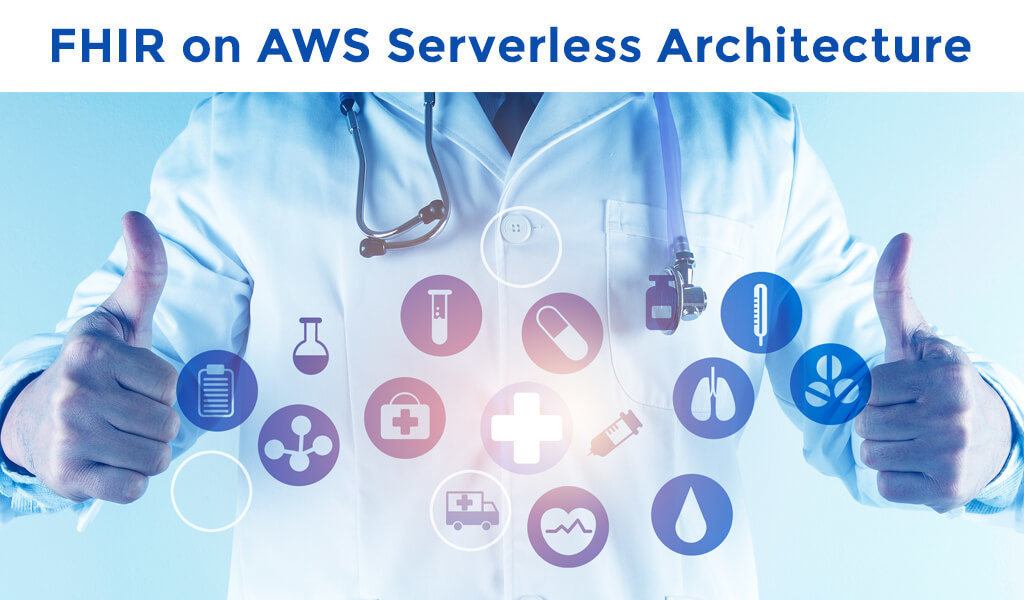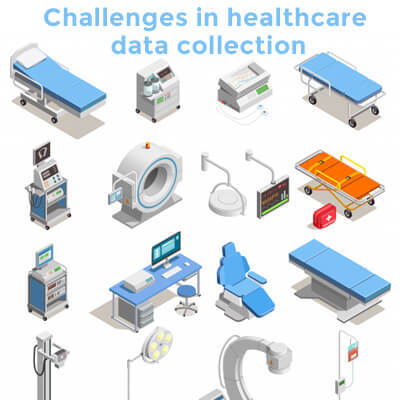
In this blog, we will discuss how to implement FHIR (Fast Healthcare Interoperability Resources) on Amazon Web Services Serverless Architecture.
How FHIR came into existence?
Patients go to multiple healthcare centers to get treatment and get diagnosed. The patients undergo a variety of tests in these medical centers. The data about the patients are captured in a variety of devices. Each of the devices has its proprietary standards. The data has to be consolidated for treatment as well as for insurance claim purposes. This is a complex task based on the situation described above.
Yes, technology helps in the transfer of data from disparate systems and consolidates the data in one standard. HL 7 was implemented. Now let us look at what is HL 7.
How Health Level Seven (HL 7) came into existence?
HL7 refers to international standards for transferring clinical and administrative data between software applications used by various providers. These standards focus on the application layer, which is layer 7 in the OSI Model.
The HL7 V1 was meant to test the concept to determine the content and structure of the standard. The HL 7 V2 was developed as a standard to exchange administrative, financial, and clinical information in text messages. This standard allowed interoperability among Patient Management, Medical practice Management, Laboratory information, Electronic Medical Record, Electronic Health Record, Pharma, and Billing systems HL7 V2 had its own share of defects in spite of the wide operability. The standard was built in an ad hoc fashion and the messaging standards were built on pipe and hat encoding. V2 did not allow a plug-and-play approach. A lot of customization had to be done
HL 7 V3 was developed as a plug-and-play standard. The model was based on the Reference /information Model (RIM) that provided consistency across entire standards.
HL 7 V3 became an established standard. This was used by multiple payers and providers for many years.
What are the challenges faced in implementing HL7?

FHIR use cases are very high. Popular EHR like Cerner, Geisinger Health systems use FHIR to create specialty-specific applications to break down data silos. The healthcare services platform consortium (HSPC) makes FHIR the centerpiece of their work to create an EHR independent marketplace to allow free flow of data across disparate systems.
What are the use cases of FHIR
There are a lot of benefits of FHIR to patients and providers. The healthcare IoT is growing where many tools connect patient-generated health data (PGHD) with provider workflows. FHIR is the possible link between EHR and the hundreds of Apple watches, Fitbits, glucose monitors, diet apps, fitness trackers, to name a few. FHIR will help providers get data that is useful and actionable for them.
With healthcare organizations collecting data from multiple devices, it is important that their systems are capable of collating these types of data. It is also important that the legacy systems get out of the private intranets and begin interacting with the patients. With patients being an important partner and hospitals intending to go without borders, many hospitals have adopted the cloud.
What is Serverless Architecture?
Now let us talk about Serverless Architecture on the cloud and its advantages. This technology provides Back-end-as-a-service (BaaS). This helps healthcare organizations to stay away from having to worry about infrastructure. It is very easy and cost-effective to deploy within hours. The architecture will help the organization scale faster, focus on UI/UX, and have improved latency.
So, let us look into what existed before we began implementing a serverless architecture. We were using servers and adding our websites/applications into them. We had to maintain the server and obviously had lots of issues because it is not in our core area of strength. We required people that added to the cost and time. However, in a Serverless architecture, there is a server involved but we don’t have to bother about managing it. AWS will take care of the infrastructure and we only need to use the application in the way we want. We will only have to add the code to it, configure the runtime requirements and run the application.
The earlier time-consuming tasks such as setting up the environments, operating systems, web servers to name a few does not exist in this situation. We will just have to upload the code and run the application.
How to Implement FHIR on AWS?

Now, let us talk about how we can implement FHIR on the cloud. We will take special reference to how FHIR can be implemented on the AWS platform. FHIR Works on AWS is an open-source software toolkit that can be used to create an FHIR interface over existing healthcare applications and data. The solution uses Amazon API Gateway to invoke the solutions microservices. These in turn interacts with Amazon Simple Storage Service (S3), DynamoDB, and Elasticsearch service to store and retrieve data
AWS comes in with a complete stack of technology to implement a serverless architecture. You can leverage AWS Lambda for creating APIs, use DynamoDB for database and use S3 for storage, use Cognito for Syndication
To conclude, you can seamlessly set up FHIR on a serverless architecture to be able to get the benefits of the low cost, low hassle, and quick implementation benefits.

YOU WILL BE HEARING FROM US SOON!
We look forward to hearing from you!

YOU WILL BE HEARING FROM US SOON!